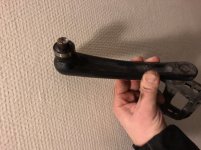skestans said:
I believe this is one of the many downsides of the stock firmware. It’s very particular about max voltages.
I think it is combination of two things. Low margin in HVC constant in FW and big tolerance in component (resistor) values. This combination causes this problem on some units, when other units work just fine. I found example of this behavior mentioned here: https://ebikechoices.com/tongsheng-tsdz2-review/#comment-512
skestans said:
A few thoughts: cells last twice as long if you charge to 90% rather than 100% and again twice as much if you stop at 80%. Why not do that then? You’ll solve two problems at once.
Yes, I also though about this, but I´m from Czech Republic and I´m having kinda hard time to find any suitable charger locally or on ebay. Luna advanced charger https://lunacycle.com/luna-charger-48v-advanced-300w-ebike-charger/ seems like a good fit, but I´m not sure if they send things overseas. Even if they will, price of shipping, customs and VAT will drive the final price noticeably higher. I would be very happy for some advice where to buy good adjustable charger (ideally on ebay).
skestans said:
Also, strongly consider flashing the open source firmware.
I´m using VLCD6 display and I want to keep it, because I don´t need any advanced features (just on/off and select power level) on this bike. Also the OSF seems to be still in the development, from what I read so far and I want to use my bike with minimal level of maintenance possible (just necessary bike maintenance and charging the battery).


